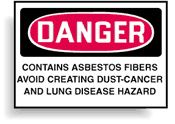 |
 |
| MSDS Topics |
Free Sites | FAQ's | Regulations | Glossary | Software | Suppliers |
| Books | Forum | Poll | Fun stuff | Quiz | Store | |
| MSDS and safety supplies | Search ALL our MSDS info | |||||
 | |||
 |
 |
 |
|
| Title: 10/16/2003 - OSHA-recognized chemicals as carcinogens or potential carcinogens for Hazard Communication purposes. | |
| Record Type: Interpretation | Standard Number: 1910.1200; 1910.1200(d)(4)(iii); 1910.1200(d)(5)(ii) |
Mr. Philip W. Crawford
Director
Gibbons, Del Deo, Dolan, Griffinger, and Vecchione
One Riverfront Plaza
Newark, NJ 07102-5496
Dear Mr. Crawford:
Thank you for your June 25 letter to the Occupational Safety and Health Administration's (OSHA's) Directorate of Enforcement Programs. You have a question regarding one of the provisions set forth in 29 CFR 1910.1200(d)(4), OSHA's Hazard Communication Standard. This letter constitutes OSHA's interpretation only of the requirements discussed and may not be applicable to any question not delineated within your original correspondence. Our reply to your paraphrased question is provided below.
Question: Please clarify 29 CFR 1910.1200(d)(4)(iii) which relates that chemical manufacturers, importers, and employers evaluating chemicals shall treat 29 CFR Part 1910, Subpart Z, Toxic and Hazardous Substances, as one source establishing that a chemical is a carcinogen or potential carcinogen for hazard communication purposes. Are the Tables Z-1, Z-2, and Z-3 intended to be lists of chemicals that OSHA recognizes as carcinogens or potential carcinogens for hazard communication purposes?
Reply: No. Tables Z-1, Z-2, and Z-3 are not intended to be lists of chemicals that OSHA recognizes as carcinogens or potential carcinogens for hazard communication purposes. When designating Subpart Z as one source establishing that a chemical is a carcinogen or potential carcinogen for hazard communication purposes, OSHA has under consideration certain substances in 29 CFR Part 1910, Subpart Z that are regulated by detailed, substance-specific standards. With the exception of 1,3-butadiene and coke oven emissions, one can identify those substances that OSHA regulates as carcinogens or potential carcinogens by referring to the section of the substance-specific standards that covers the labeling of containers. The current list of substances that OSHA regulates as carcinogens or potential carcinogens follows:
|
 If you have an asbestos hazard, good signage and labeling are critical. Signs from Safety Emporium can help.
|
In addition, in your letter, you stated, "Pursuant to 29 CFR 1910.1200, chemical manufacturers are obligated to list a product as containing a carcinogenic substance if a constituent element makes up more than 0.8 percent of the product…" Please be advised that 1910.1200(d)(5)(ii) requires that a mixture, "shall be assumed to present a carcinogenic hazard if it contains a component in concentrations of 0.1 percent or greater, which is considered to be a carcinogenic under (d)(4) of this section."
Thank you for your interest in occupational safety and health. We hope you find this information helpful. OSHA requirements are set by statute, standards, and regulations. Our interpretation letters explain these requirements and how they apply to particular circumstances, but they cannot create additional employer obligations. This letter constitutes OSHA's interpretation of the requirements discussed. Note that our enforcement guidance may be affected by changes to OSHA rules. Also, from time to time we update our guidance in response to new information. To keep apprised of such developments, you can consult OSHA's website at http://www.osha.gov. If you have any further questions, please feel free to contact the Office of Health Enforcement at 202-693-2190.
Sincerely,
Richard E. Fairfax, Director
Directorate of Enforcement Programs
The official, public domain, OSHA version of this document is available at http://www.osha.gov/pls/oshaweb/owadisp.show_document?p_table=INTERPRETATIONS&p_id=24730&p_text_version=FALSE